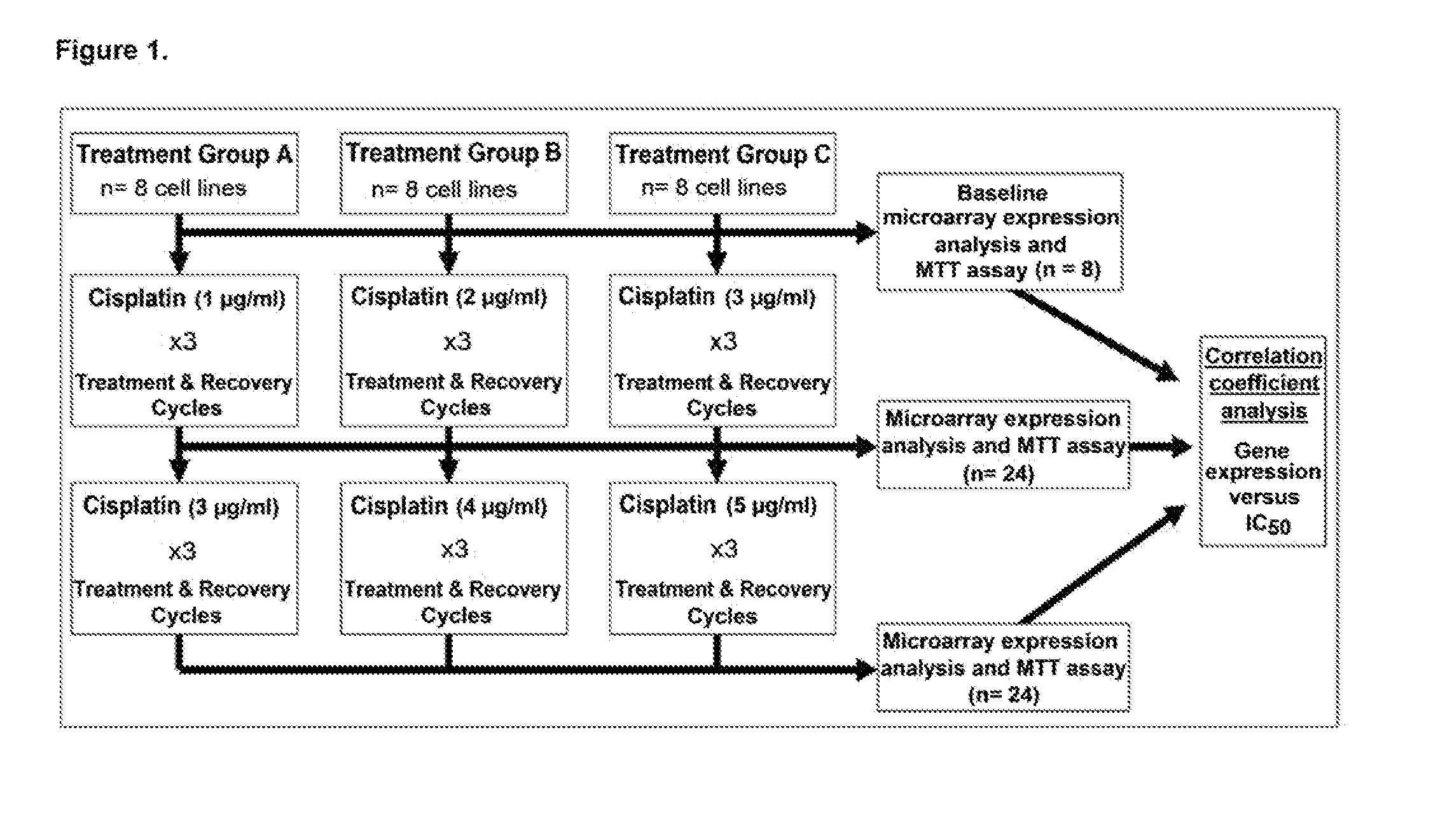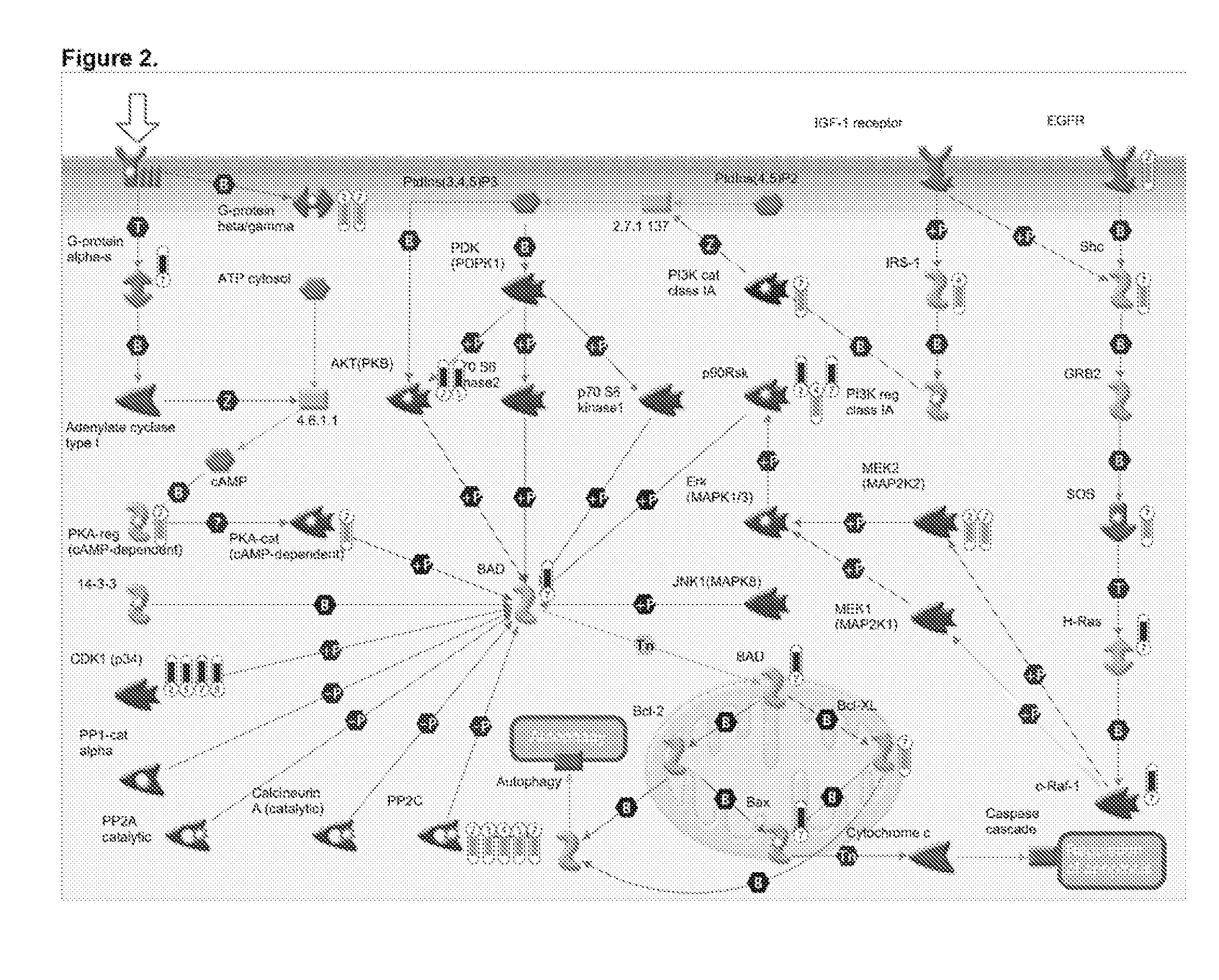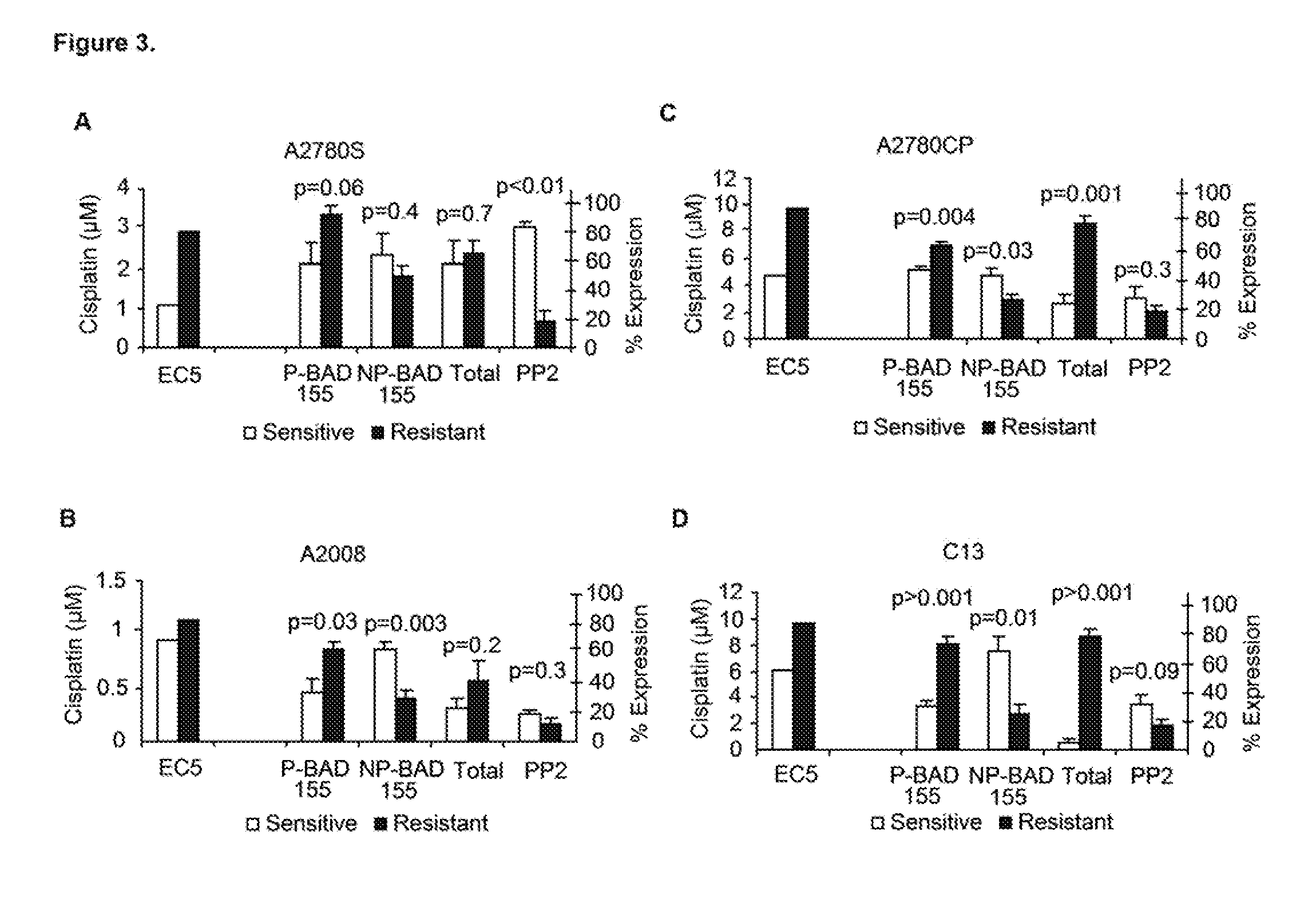Bad phosphorylation determines ovarian cancer chemo-sensitivity and patient survival
a phosphorylation and ovarian cancer technology, applied in the field of biochemical assays, can solve the problems of poor overall survival of ovarian cancer and associated pbad protein levels with poor phosphorylation
- Summary
- Abstract
- Description
- Claims
- Application Information
AI Technical Summary
Benefits of technology
Problems solved by technology
Method used
Image
Examples
example 1
[0042]Cell lines were induced for platinum resistance. Acquisition and culture conditions for the expansion of OVCA cells lines (T8, OVCAR5, OV2008, IGROV1, C13, A2780S, A2780CP, and A2008) were reported previously (Boren, et al., MicroRNAs and their target messenger RNAs associated with ovarian cancer response to chemotherapy. Gynecol Oncol 2009;113:249-255). Cells were subjected to sequential treatment with increasing doses of cis-diammine-dichloroplatinum (cisplatin), using three dosing schedules resulting in 144 treatment / expansion cycles, as seen in FIG. 1. Treatment schedules A, B, and C included three treatments with 1, 2, and 3 μg / mL cisplatin, respectively, followed by three treatments with 3, 4, and 5 μg / mL, respectively. Each cisplatin treatment was followed by a cell recovery / expansion phase. Both cisplatin-resistance and genome-wide expression changes were measured serially in each cell line at baseline and after 3 and 6 cisplatin-treatment / expansion cycles. Cisplatin-r...
example 2
[0054]Primary OVCA Patient Samples were selected for 1) genome-wide expression data from 142 patients treated at Duke and Moffitt Cancer Centers (including 114, previously reported, Dressman et al. 2007 (Dressman, et al., An integrated genomic-based approach to individualized treatment of patients with advanced-stage ovarian cancer. J Clin Oncol 2007;25: 517-25), and 28 new samples), and 2) 147 OVCA samples obtained from the University of Minnesota (UMN, n=49) and Moffitt Cancer Center (n=98) and analyzed by immunoflourescence for pBAD protein levels. As such, this study included analysis of data / specimens from 289 (142+148) OVCA patients treated at Moffitt, Duke, and UMN, the characteristics are summarized in Table 4. All 289 patients (including those treated at Moffitt, Duke, UMN) were required to have a pathologically confirmed diagnosis of serous epithelial ovarian cancer, be over 18 years of age, surgically confirmed advanced stage (III / IV) disease, primary surgical cytoreducti...
PUM
| Property | Measurement | Unit |
|---|---|---|
| weight | aaaaa | aaaaa |
| chemotherapeutic resistance | aaaaa | aaaaa |
| chemotherapeutic-resistance | aaaaa | aaaaa |
Abstract
Description
Claims
Application Information
 Login to View More
Login to View More - R&D
- Intellectual Property
- Life Sciences
- Materials
- Tech Scout
- Unparalleled Data Quality
- Higher Quality Content
- 60% Fewer Hallucinations
Browse by: Latest US Patents, China's latest patents, Technical Efficacy Thesaurus, Application Domain, Technology Topic, Popular Technical Reports.
© 2025 PatSnap. All rights reserved.Legal|Privacy policy|Modern Slavery Act Transparency Statement|Sitemap|About US| Contact US: help@patsnap.com



